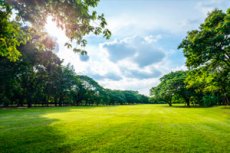New publications
Natural landscapes encourage healthier food choices
Last reviewed: 02.07.2025

All iLive content is medically reviewed or fact checked to ensure as much factual accuracy as possible.
We have strict sourcing guidelines and only link to reputable media sites, academic research institutions and, whenever possible, medically peer reviewed studies. Note that the numbers in parentheses ([1], [2], etc.) are clickable links to these studies.
If you feel that any of our content is inaccurate, out-of-date, or otherwise questionable, please select it and press Ctrl + Enter.

Natural landscapes tend to evoke positive emotions and feelings of well-being in most people. New research from INSEAD shows that green views can also encourage people to make healthier food choices.
A study published in Communications Psychology suggests that being in natural settings, such as walking through a park (as opposed to walking on city streets) or simply looking out the window at greenery (as opposed to a city view), leads to people making healthier food choices later on.
"Our research shows that it was not the urban view that led to unhealthy food choices, but rather that nature influenced people to eat healthier foods," says Pierre Chandon, one of the study's co-authors and the L'Oréal Professor of Marketing at INSEAD.
In one study, participants were randomly assigned to take a 20-minute walk through either a park or the busy streets of Paris. Afterwards, all participants were offered a buffet of snacks, some healthy, some less healthy.
Although both groups ate roughly the same amount of food, those who walked in the park showed a clear preference for healthier snacks: 70% of their choices were healthy snacks, compared to only 39% for those who walked in the city.
In another, more controlled experiment, participants were placed in simulated "hotel rooms" with different views: a green pasture, a city street, or a control condition—a white wall with closed curtains. They were asked to choose a meal from a room-service menu that included healthy and unhealthy entrees, drinks, and desserts.
The results replicated the previous experiment. Those who looked at nature chose healthier options, while those who looked at a cityscape or a curtained wall showed less healthy preferences.
The idea for the study came from co-author Maria Langlois, who noticed how she and her fellow cyclists on a 4,500-mile charity bike ride gravitated toward healthier, unprocessed foods while riding through natural areas. Langlois, now an assistant professor of marketing at Southern Methodist University’s Cox School of Business, turned that observation into a series of rigorous field and online studies when she enrolled in graduate school at INSEAD.
Interestingly, the study shows that not all natural environments have the same effect. The brightness and level of greenery in the environment can play a role. For example, when snow covers natural or urban views, the scenery does not affect food choices.
The researchers conducted another experiment to see if exposure to nature increased preferences for truly healthy and natural foods, or for any processed foods that were marketed as healthy. They offered participants three types of snacks: diet and light, healthy and natural, or tasty and indulgent.
Exposure to natural species reduced preference for both diet snacks and significantly shifted preferences away from indulgent options toward healthier, more natural ones.
These results offer hope for promoting healthier eating habits. Schools, companies, and other organizations can use natural imagery in cafeterias to encourage students and employees to make healthier choices. Food marketers can use natural visual cues to promote healthy or natural products.
More importantly, this study reminds us of the important role of urban planning. By 2050, two-thirds of the world’s population will live in cities. Incorporating green space into future urban landscapes will become even more important.
